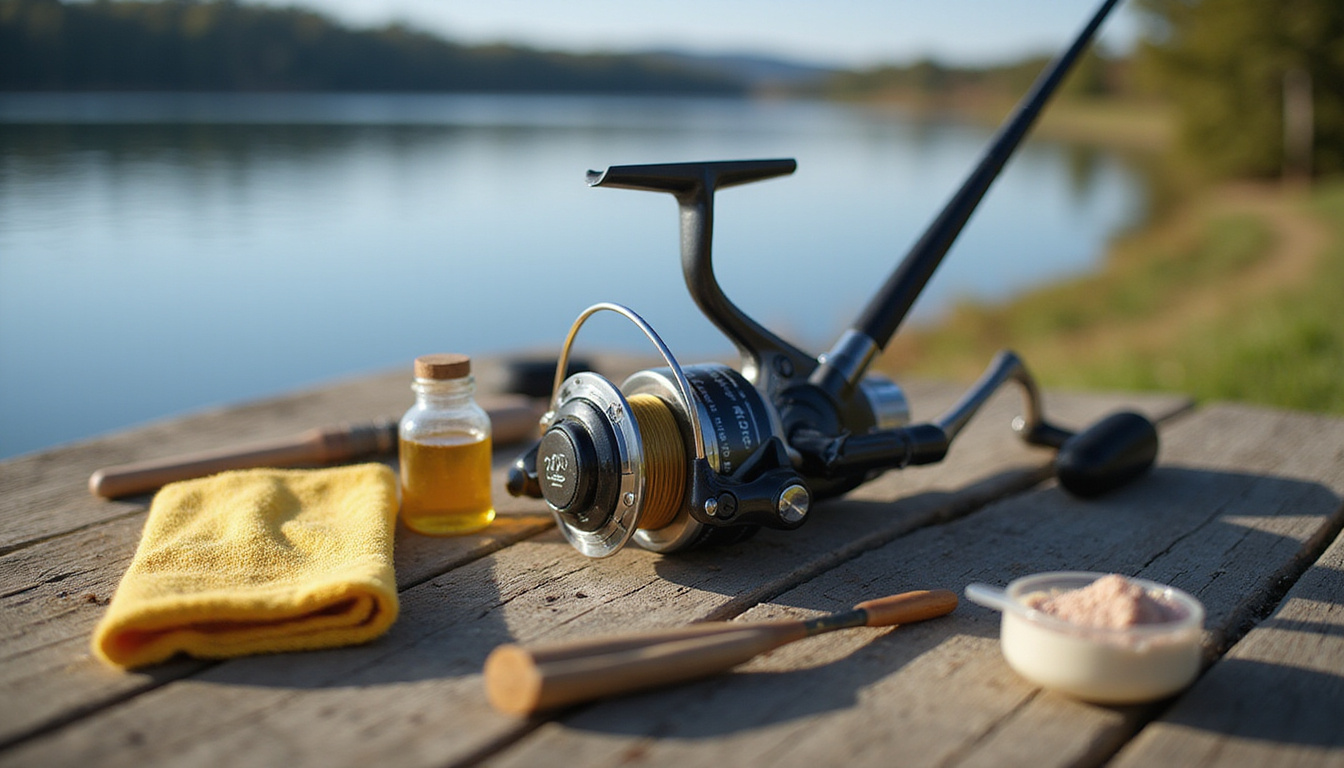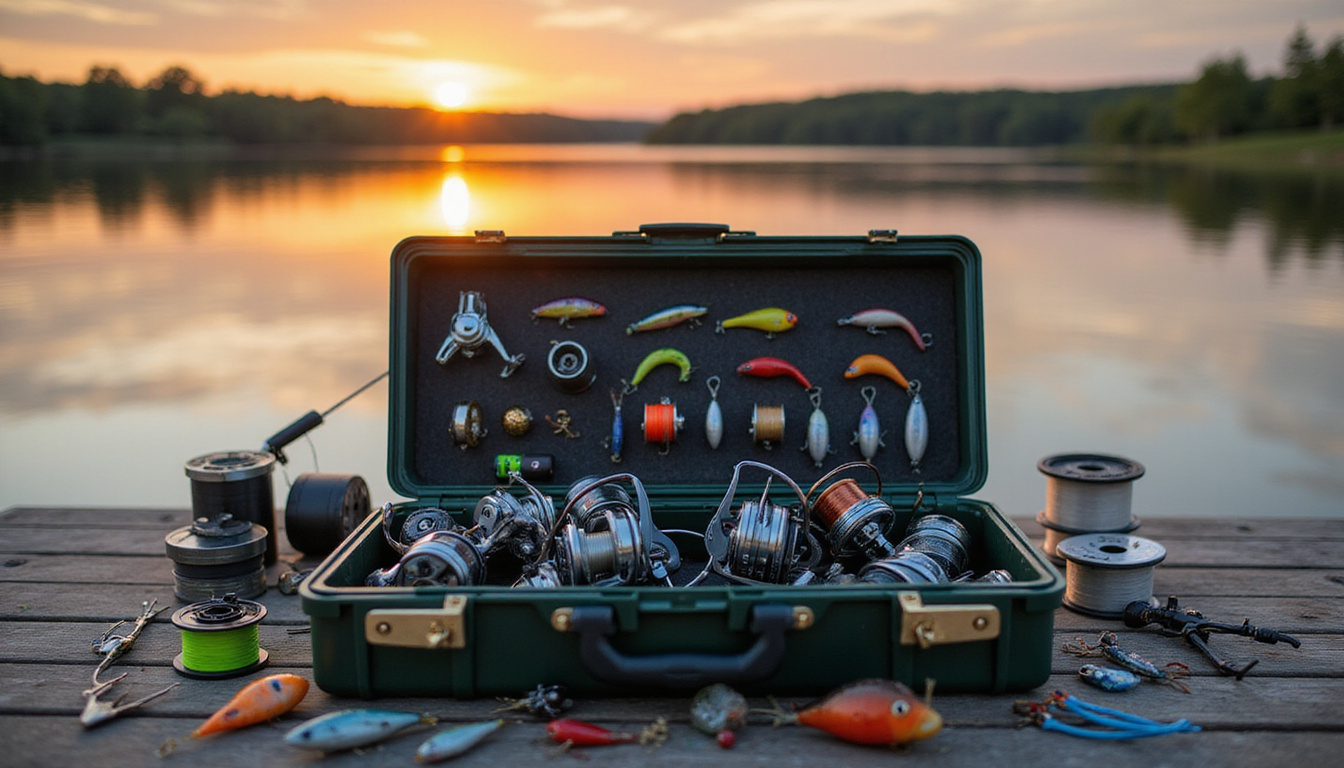
Essential Tips on How to Maintain Fishing Reels for a Longer Lifespan
On March 29, 2025 by Andy FordFishing reels are essential tools for anglers, aiding in the successful catch of fish.
However, like any equipment, they require proper care and maintenance to ensure a longer lifespan.
Learning how to maintain fishing reels for a longer lifespan is crucial for maximizing your investment and enhancing your fishing experience.
In this article, we’ll explore the key components of a fishing reel, effective cleaning and lubrication techniques, proper storage methods, and the importance of regular maintenance routines to keep your fishing reels in optimal condition.
Mastering Saltwater Fishing: A Complete Guide to Choosing the Right Fishing Line

Key Takeaways
- Familiarize yourself with the components of your fishing reel to understand its maintenance needs.
- Regularly clean and lubricate your reel to prevent corrosion and ensure smooth operation.
- Store your fishing reel in a dry, cool place to protect it from environmental damage.
- Adopt a routine maintenance schedule to check for wear and tear on your reel.
- Take the time to inspect and replace worn parts as needed to extend the lifespan of your fishing reel.
Understanding the Parts of Your Fishing Reel
Understanding the parts of your fishing reel is crucial for maximizing your fishing experience and ensuring a long lifespan for your equipment.
Fishing reels typically consist of several key components: the spool, where the fishing line is wound; the drag system, which controls the resistance on a hooked fish; the bail, which opens and closes to allow line retrieval; and the handle, which enables you to retrieve the line.
Familiarizing yourself with these parts not only enhances your fishing skills but also helps in understanding how to maintain fishing reels for longer lifespan.
Regular cleaning, lubrication, and proper storage are essential to keep these components in optimal condition, preventing rust and wear.
By taking the time to learn about your reel’s anatomy and maintenance needs, you can ensure that your fishing gear remains reliable, enabling you to focus on what you love most—angling.
Cleaning and Lubricating Your Fishing Reel
To enhance the longevity of your fishing gear, understanding how to maintain fishing reels for longer lifespan is essential.
Regular cleaning and proper lubrication are key components of reel maintenance.
Start by disassembling your fishing reel according to the manufacturer’s instructions; this usually involves removing the spool and side covers.
Use a soft cloth or a brush to gently clean the exterior and remove any dirt, sand, or salt that may have accumulated.
For the internal parts, a dedicated reel cleaner can help break down any grime accumulated during fishing trips.
After cleaning, inspect all components for wear and tear.
Once everything is clean, apply a quality reel lubricant on the gears and bearings, ensuring it penetrates well.
Avoid over-lubricating, as excess oil can attract dirt and cause more problems.
Finally, reassemble the reel and give it a functional test to ensure smooth operation.
By understanding how to maintain fishing reels for longer lifespan, anglers can enjoy more seamless fishing experiences while protecting their investments.
‘The best way to predict the future is to create it.’ – Peter Drucker
Mastering Saltwater Fishing: A Complete Guide to Choosing the Right Fishing Line

Storing Your Fishing Reel Properly
Storing your fishing reel properly is a critical aspect of how to maintain fishing reels for longer lifespan.
The right storage conditions can prevent unnecessary wear and tear, ensuring your reel remains in excellent working condition for years to come.
Always clean your reel after each use, removing saltwater, dirt, and debris to prevent corrosion.
Once cleaned, store the reel in a cool, dry place away from direct sunlight, as UV rays can degrade materials over time.
Additionally, it’s beneficial to loosen the drag system slightly to relieve tension on the line and prevent any possible deformation or damage during storage.
Using a dedicated reel case or wrapping your reel in a soft cloth can further protect it from dust and impacts.
By following these simple storage tips, you’ll significantly enhance how to maintain fishing reels for longer lifespan, allowing you to enjoy more successful fishing trips.
Regular Maintenance Routines for Longevity
To ensure the longevity of your fishing gear, understanding how to maintain fishing reels for longer lifespan is essential.
Regular maintenance routines can significantly enhance the performance and durability of your reels.
Start by cleaning your reels thoroughly after each use, particularly if you’ve been fishing in saltwater.
Rinse them under fresh water to remove any debris and salt buildup.
After rinsing, dry them with a soft cloth and apply a drop of oil to the moving parts to keep the mechanics operational.
Additionally, check the drag system and ensure it functions smoothly, making adjustments as necessary.
Inspect the line for wear and replace it when needed; this will not only improve your catch rate but also prevent damage to the reel.
Store your reels in a cool, dry place, and avoid exposing them to direct sunlight for extended periods.
By incorporating these practices into your fishing routine, you will learn how to maintain fishing reels for longer lifespan, ensuring they perform optimally for years to come.
Frequently Asked Questions
What are the main parts of a fishing reel that I should be aware of?
The main parts of a fishing reel include the spool, drag system, bail, handle, and gears.
Understanding these components can help you maintain your reel more effectively.
How often should I clean my fishing reel?
It is recommended to clean your fishing reel after each use, especially if you’ve been fishing in saltwater or muddy conditions.
Regular cleaning prevents corrosion and buildup.
What type of lubricant should I use for my fishing reel?
Use a lubricant specifically designed for fishing reels, as it provides protection without attracting dirt and debris.
Avoid using general oil or grease.
What is the best way to store my fishing reel to ensure longevity?
Store your fishing reel in a cool, dry place, away from direct sunlight.
Remove any line from the spool and consider keeping it in a protective case.
How can I establish a regular maintenance routine for my fishing reel?
A regular maintenance routine should include cleaning after fishing trips, lubricating the reel every few uses, and performing a thorough inspection before each fishing season.
100% Free Ai trading Bot Click here for yours!
Archives
Calendar
| S | M | T | W | T | F | S |
|---|---|---|---|---|---|---|
| 1 | 2 | |||||
| 3 | 4 | 5 | 6 | 7 | 8 | 9 |
| 10 | 11 | 12 | 13 | 14 | 15 | 16 |
| 17 | 18 | 19 | 20 | 21 | 22 | 23 |
| 24 | 25 | 26 | 27 | 28 | 29 | 30 |
| 31 | ||||||
